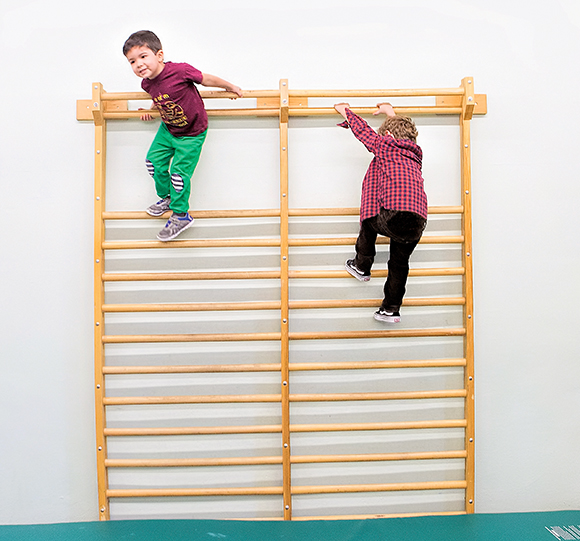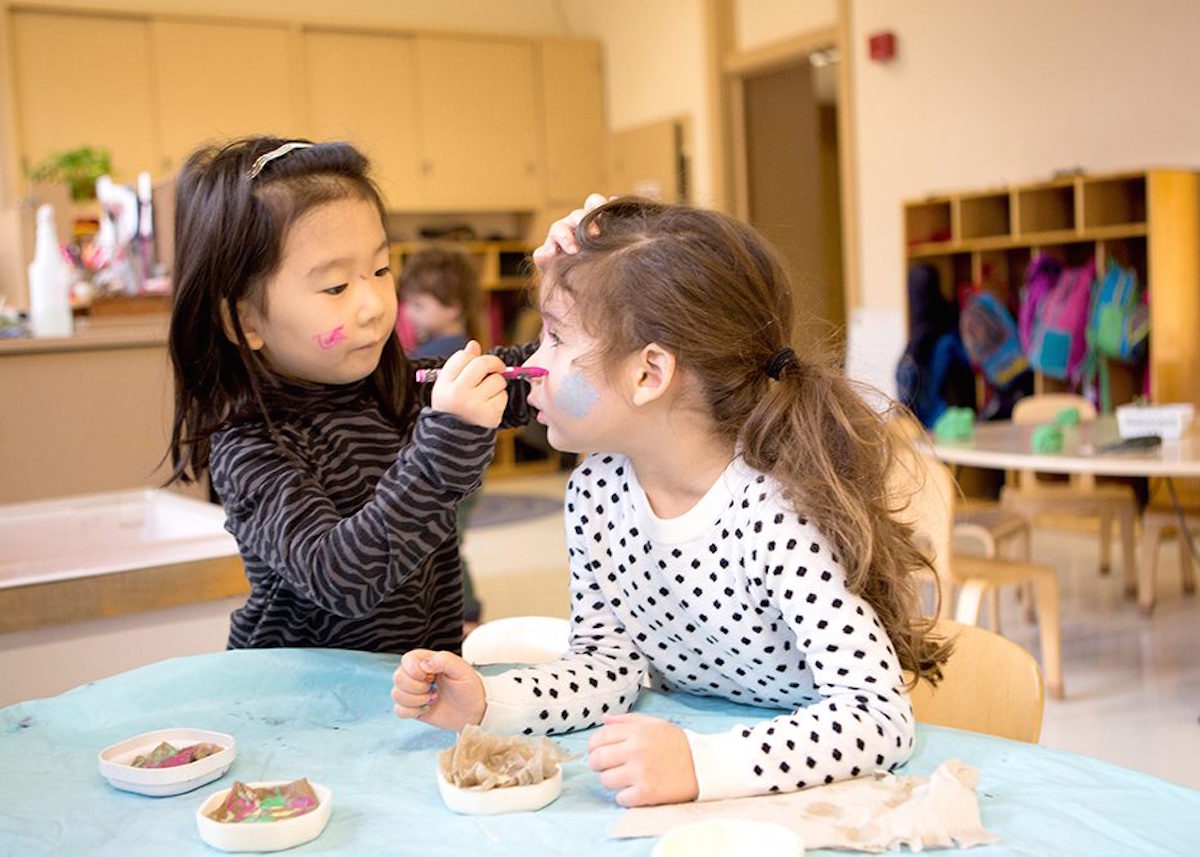The teachers at the Shirley G. Moore Laboratory School are experts in play, and so are the children.
On any given morning, the school’s toddlers and preschoolers are painting their faces, exploring sensory tables, building, drawing, climbing, running around outside—in all seasons—or interacting with resident pet turtles and snakes.
“We don’t have to teach children to play,” says Ross Thompson, ’07, a lead teacher who joined the school’s staff in 2005. “It’s something that children are naturally drawn to.”
The research-focused preschool opened its doors in 1925. Part of the Institute of Child Development, it is housed in the 1903 wing of the red-brick Child Development building on East River Road, with a big fenced yard full of play areas and equipment. It enrolls about 100 children per year.
The lab school bases its instruction on the idea that children are the agents of their own learning, encouraging hands-on, child-directed experiences.
“We try and keep it pretty open ended,” says director Sheila Williams Ridge.
“We know that when children are engaged in learning, that focus can lead to a deeper knowledge.”
Giving children more of a say in what and how they learn is important, and a lot of that learning happens during play, she explains.
The lab school serves children ages two through five, shaping its classrooms around the varied ways students play at different ages.
For the youngest children, sensory tables are a focus of the classrooms, where two-year-olds can explore the different textures of sand, water, and other materials. For older children, classrooms offer building supplies, writing desks, and a sturdy wooden castle sized for a preschooler.
“The lab school is one of the few places that really has play as the main focus of what children are doing,” says Elizabeth Criswell, ’11, another lead teacher. “The entire program is set up to support that.”
Getting to know you
In a child-directed environment like the lab school, the teacher’s role is unique.
“I try to see myself as more of a facilitator,” Thompson says. “I’m an observer.”
Teachers watch and listen thoughtfully, spotting where individual children succeed and struggle and then using those observations to shape the classroom environment.
“Through play, children show us what they need,” says Thompson. “If we can really listen, we use that to drive what’s happening in the room.”

As part of the Institute of Child Development (ICD), the school also trains about 40 undergraduate and graduate early childhood education teacher candidates each year. The candidates plan and lead activities and work alongside a lead teacher throughout the year. Williams Ridge says connecting with the children is some of the teacher candidates’ most important work.
“The first few weeks, their only assignment is to build relationships,” Williams Ridge says. “We just want them to get to know the children.”
Because of the school’s research focus, teachers and teacher candidates are aware of the latest research from ICD and other University departments. And researchers can survey classes from observation booths adjacent to each room or conduct more hands-on projects with the children.
“We’re trying to always use the most current knowledge and understanding of what’s happening in development in our own philosophy and practices in the classroom,” says Thompson.
Between the school’s flexible model and the influence of research, both children and teachers are allowed a lot of room for exploration and growth. Play is at the center of it all.
“We want to give children the freedom to explore the world around them and learn from their experiences,” Criswell says, “and they do that through play.”
Letting children lead
Play has proven beneficial to all areas of child development—cognitive, physical, social, and emotional.
For Thompson, whose work and study focus on large-motor-skill development, active play involving a child’s whole body is a key component of well-rounded learning.

“It’s that large-muscle movement that’s allowing our brains to make connections,” he explains. “We need our bodies to do it and feel it before our brains are ready to take it in.”
Parents and teachers wondering how best to foster play and learning with their own young ones can follow the lead of lab school staff—dive right in, but let the child take the wheel. Adults might feel like they need to keep control, but letting children lead is better in the long run, says Criswell.
“Because it’s child directed, it sometimes can feel very overwhelming,” Criswell says. “I encourage people to just have trust in children.”
And when children and adults play together, Williams Ridge says, the kids aren’t the only ones who benefit. Adults can and should take time for play, too.
“There’s something that feels really good about playing with children,” says Williams Ridge. “And we know that play is a really effective way to learn.”
Learn more about the Shirley G. Moore Laboratory School and the Institute of Child Development.
Story by Ellen Fee | Photos by Erica Loeks Photography | Spring/Summer 2017
 Children painted each other's faces at a table in a lab school classroom.
Children painted each other's faces at a table in a lab school classroom.